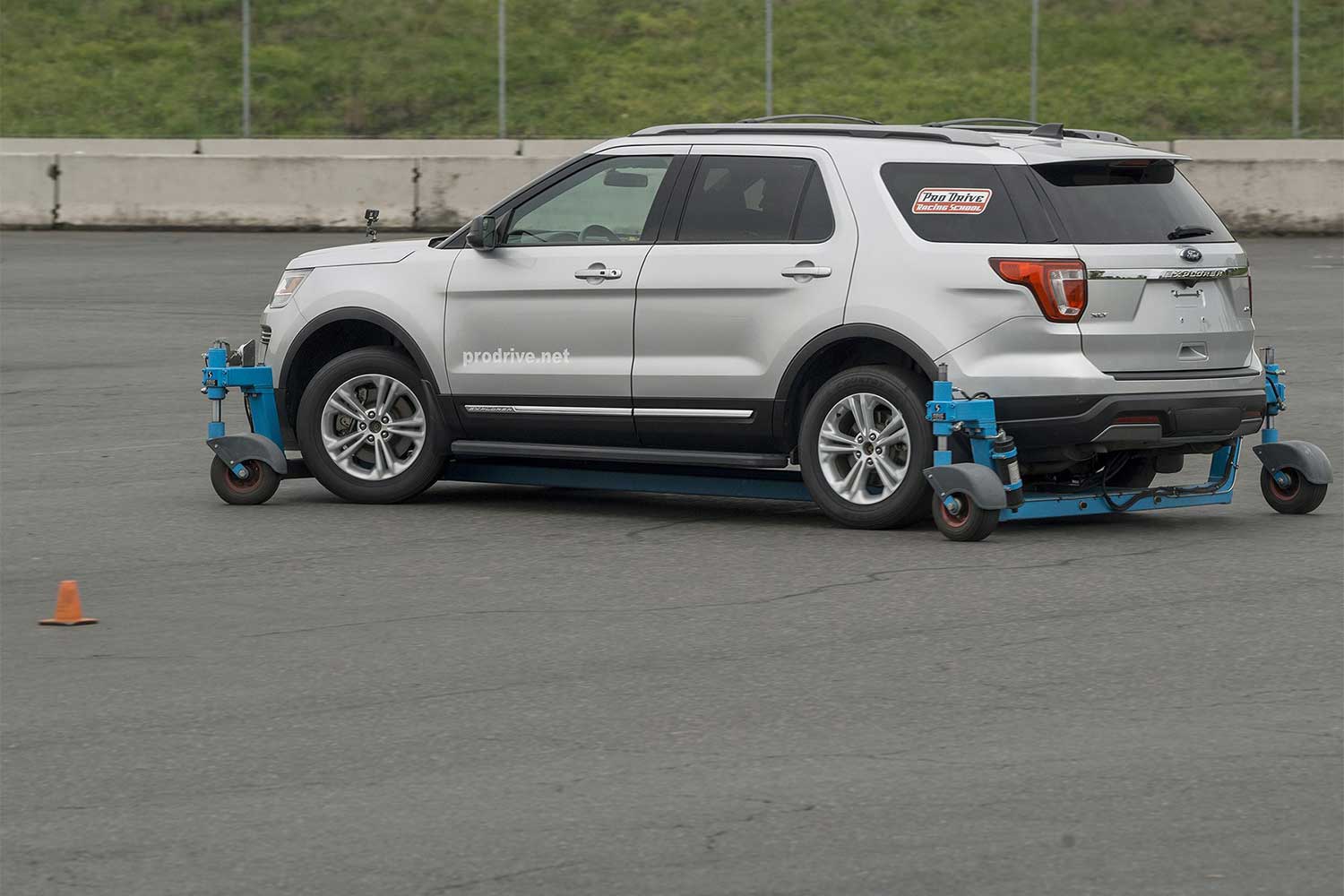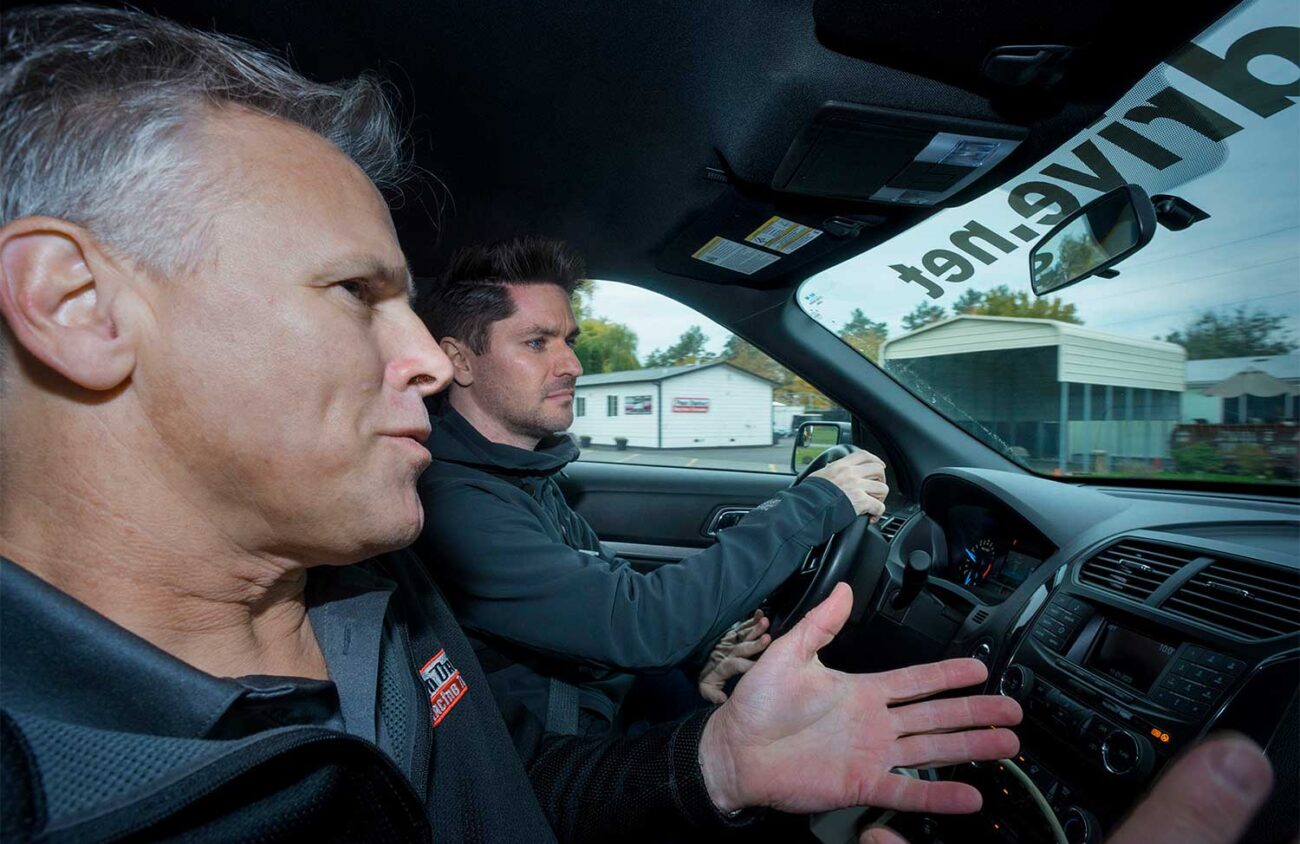You’re driving down I-5, heading over the Siskiyou Pass for your annual holiday visit to see family in California, or you’re taking advantage of holiday vacation days to head into the Cascades to go skiing. As you’re driving, you hit a patch of ice, or maybe you hydroplane on a puddle. Now what?
According to the Oregon Department of Transportation, across the last decade, 4,900 crashes have occurred in December alone and 4,555 in November. With winter — and Thanksgiving driving — approaching, it is more important than ever to get refreshed in how to control your vehicle.
Also, ODOT says a lack of funding means the agency will have to cut back on road maintenance — meaning drivers will have longer wait times for roads to be opened in the case of a crash or inclement weather. ODOT recommends extra caution while on the road and says its priority is still driver safety.
Todd Harris, the president of Pro Drive Racing School, says, “The most common mistake drivers make is overestimating their vehicle’s capabilities and their own driving skills. Just notice how many nice four-wheel SUVs are crashed during the next snowstorm.” ODOT and Pro Drive teamed up recently to do outreach on winter driving.
Harris showed Eugene Weekly the best ways to control a vehicle while driving through icy and snowy conditions at the Portland International Raceway. Harris used a specially equipped skid car, which can simulate what it is like to experience front and rear skids. The car gives the feel of sliding around in the snow or ice. The front skid makes your heart sink in your chest as the tail end of your car goes places it really shouldn’t.
With the simple adjustment of a hydraulic, Harris can change it to rear skid, front or both. The rear skids feel like a classic drift you would feel in the Fast in the Furious. Rear skids are typically the most common on icy roads as the ice limits the amount of traction the tires have. Fun on a race track, but terrifying anywhere else.

Harris says driving at a reduced speed, using smoother controls on your steering wheel and brakes, and not overestimating what you and your car can handle can help you avoid getting in a skid.
When in a skid, it is best to stop braking and accelerating, and instead turn your front wheels in the same direction that the rear of the vehicle is sliding.
Not only is it important to be able to handle your vehicle, but having the necessary supplies in your vehicle makes a huge difference. ODOT recommends having food, water, a flashlight, blankets, and even any sort of tools you can use to maintain your vehicle. ODOT also suggests checking potential hazards on your route before you hit the road.
When it comes to what shape your vehicle is in, ODOT recommends that your headlights, brakes, windshield wipers and tires function properly. And observe winter driving precautions like not passing a snow plow, and making sure you have chains that you know how to install.
ODOT says that as costs increase, and fuel tax revenues trend down, the agency is “forced to scale back maintenance and services around the state.”
According to a budget fact sheet on ODOT’s Region 2, which includes Lane County, ODOT is reducing pavement maintenance for low-volume roads, which are highways averaging less than 3,000 vehicles daily. It will defer pothole and chip seal projects, and not repaint edge lines
This winter it will reduce the amount of sand and deicer applied to state highways, and focus efforts on “key highways, hills, curves and known trouble spots.”
In a press release following the winter driving outreach event, the agency adds, “We won’t be able to clear roads during winter storms as quickly as in the past. There may be more snow and ice buildup, more chain requirements and longer delays and more frequent road closures.”
